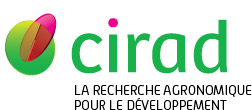Paul Birthe K., Koge Jessica, Maass Brigitte L., Notenbaert An, Peters Michael, Groot Jeroen C.J., Tittonell Pablo. 2020. Tropical forage technologies can deliver multiple benefits in Sub-Saharan Africa. A meta-analysis. Agronomy for Sustainable Development, 40 (4):22 : 1-17.
|
Version publiée
- Anglais
Accès réservé aux personnels Cirad Utilisation soumise à autorisation de l'auteur ou du Cirad. 605383.pdf Télécharger (5MB) | Demander une copie |
Résumé : Scarcity of quantity and quality feed has been a key constraint to productivity of smallholder crop-livestock systems. Tropical forages include a variety of annual and perennial grasses, herbaceous and dual-purpose legumes, and multipurpose trees and shrubs. They have been promoted in Sub-Saharan Africa (SSA) for increasing livestock productivity and household income through higher quantity and quality of herbage, while contributing to soil improvement and higher food crop yields. For the first time, we quantitatively reviewed 72 experimental studies from across SSA to take stock of geographical distribution and forage technology focus of past research; quantify magnitudes of multidimensional impacts of forage technologies; and present variability in forage agronomy data. Improved forage technologies were classified into four groups: (i) germplasm, (ii) management, (iii) cropping system integration, and (iv) feeding regime. Mean weighted response ratios were calculated from 780 pairs of observations for 13 indicators across the five impact dimensions. Improved forage germplasm had on average 2.6 times higher herbage productivity than local controls, with strongest effect in grasses. Feeding regimes with improved leguminous forages increased milk yield by on average 39%, dry matter intake by 25%, and manure production by 24%. When forage technologies were integrated with food crops, soil loss was almost halved, soil organic carbon increased on average by 10%, and grain and stover yields by 60% and 33%, respectively. This study demonstrates the central role improved forages could play in sustainable intensification of crop-livestock systems in SSA. It highlights the need for multidisciplinary and systems-level approaches and studies to quantify synergies and tradeoffs between impact dimensions. Further research is needed to explain forage agronomic yield variability, unraveling interactions between genotype, on-farm environmental conditions, and management factors. Results from this review can inform development programs, prioritizing technologies proven successful for dissemination and indicating magnitudes of expected impacts.
Mots-clés Agrovoc : rendement des cultures, variété mixte, arbre à buts multiples, technologie alimentaire, qualité des aliments
Mots-clés géographiques Agrovoc : Afrique au sud du Sahara, Afrique
Mots-clés libres : Crop-livestock systems, Herbaceous legume, Forage grass, Soil organic carbon, Livestock productivity, Forage agronomy, Cropping system, Multi-dimensional impacts, Sustainable intensification
Agences de financement hors UE : United States Agency for International Development, Deutsche Gesellschaft für Internationale Zusammenarbeit, Bundesministerium für Wirtschaftliche Zusammenarbeit und Entwicklung, Consortium of International Agricultural Research Centers
Auteurs et affiliations
- Paul Birthe K., CIAT (KEN)
- Koge Jessica, CIAT (KEN)
- Maass Brigitte L., CIAT (COL)
- Notenbaert An, CIAT (COL)
- Peters Michael, CIAT (KEN)
- Groot Jeroen C.J., Wageningen University and Research Centre (NLD)
- Tittonell Pablo, CIRAD-PERSYST-UPR AIDA (FRA)
Source : Cirad-Agritrop (https://agritrop.cirad.fr/605383/)
[ Page générée et mise en cache le 2025-03-10 ]




